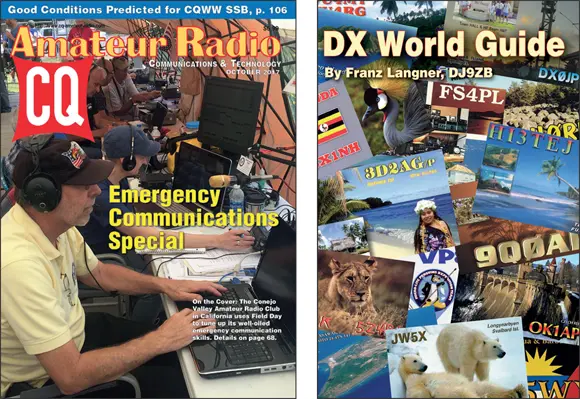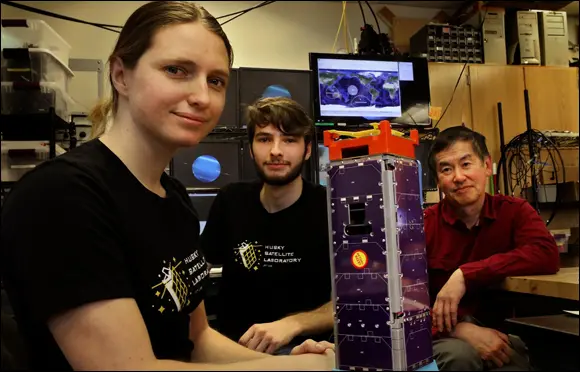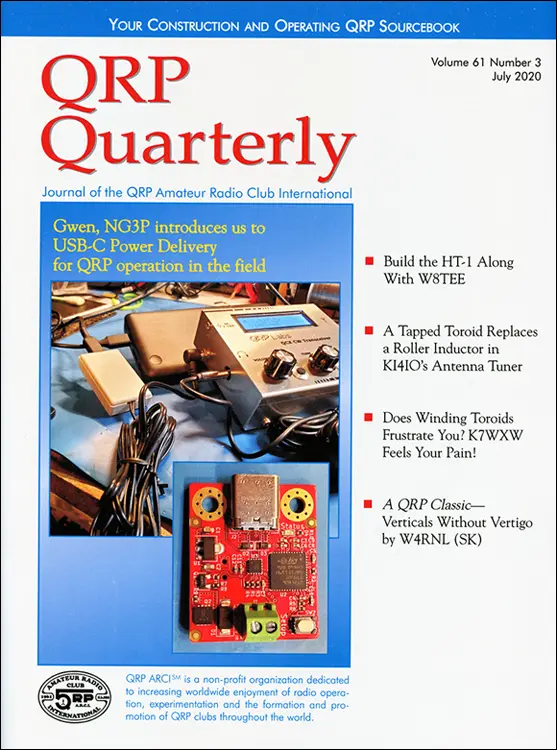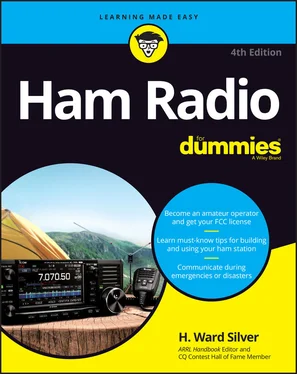Ham radio provides excellent communication opportunities to people who otherwise find themselves constrained by physical limitations. Handiham ( www.handiham.org ), founded in 1967, is dedicated to providing tools that make ham radio accessible to people with disabilities of all sorts, helping them turn their disabilities into assets. The website provides links to an extensive set of resources.
Handiham not only helps hams with disabilities reach out to the rest of the world, but also helps its members link up with other members and helpful services.
 Even if you’re not disabled, Handiham may be a welcome referral for someone you know, or you may want to volunteer your services.
Even if you’re not disabled, Handiham may be a welcome referral for someone you know, or you may want to volunteer your services.
 The CQ Communications family of print and digital magazines (see Figure 3-5) provides a lot of good information on ham specialties. CQ focuses on general-interest stories and news, product reviews, and columns on technical and operating interests. CQ Communications also publishes books on a wide range of topics and offers a good-looking yearly calendar each fall.
The CQ Communications family of print and digital magazines (see Figure 3-5) provides a lot of good information on ham specialties. CQ focuses on general-interest stories and news, product reviews, and columns on technical and operating interests. CQ Communications also publishes books on a wide range of topics and offers a good-looking yearly calendar each fall.

Magazine covers courtesy CQ Communications, Inc.
FIGURE 3-5:CQ Communications publications cover just about every style and interest in ham radio.
AMSAT (short for Radio AMateur SATellite Corporation, www.amsat.org ) is an international organization that helps coordinate satellite launches and oversees the construction of its own satellites. Yes, Virginia, there really are amateur radio satellites whizzing through the heavens! The first one, launched in 1962, sent a Morse code beacon consisting of the letters HI (in Morse code speak, “di-di-di-dit, di-dit”), known as “the telegrapher’s laugh.” The first, OSCAR-1 (Orbiting Satellite Carrying Amateur Radio), was about the size of a briefcase.
The big news in amateur satellites these days are the nano-sized satellites known as CubeSats ( www.cubesat.org ). Pioneered by amateurs, hundreds of these satellites are launched every year by NASA, the ESA, and JAXA. These are often constructed by university student teams (see Figure 3-6) and use amateur radio as their means of communication to send data. Some CubeSats include a repeater or translator so that hams can communicate through them.

FIGURE 3-6:University of Washington students designed and built HuskySat-1, launched in 2019 with a ham radio transponder and science experiments.
Radio operation via satellite is a lot easier than you may think, however, as you can find out in Part 4of this book. All you need to make contacts through — or with — satellites is some simple equipment. Figure 3-7 shows Sean Kutzko (KX9X) using a handheld radio and a hand-aimed antenna to make contacts through satellite AO-27.
Tucson Amateur Packet Radio (TAPR; www.tapr.org ) has been instrumental in bringing modern digital communications technology to ham radio. In return, TAPR members created several innovative communication technologies that are now commonplace beyond ham radio, such as the communications system known as packet radio, which is widely used in industry and public safety. Recently, TAPR members have been involved in developing a state-of-the-art package of scientific instrumentation called the Personal Space Weather Station. It will provide research quality data and be affordable so that hams can install it at their stations around the world.

FIGURE 3-7:Sean Kutzko (KX9X) shows that satellite operation can be easy!
TAPR also sponsors conferences and publications, working with other organizations such as AMSAT and HamSCI ( www.hamsci.org ) to help develop state-of-the-art digital communications technology for amateur radio. If you have a strong computer or digital technology background, TAPR is likely to have activities that pique your interest.
The Young Ladies’ Radio League (YLRL; www.ylrl.org ) is dedicated to promoting ham radio to women, encouraging them to be active on the air, promoting women’s interests within the hobby, and providing a membership organization for female hams.
The organization has chapters in many countries, some of which host conventions, thereby creating opportunities for members to travel.
The YLRL’s website provides a list of activities and member services. The organization also has a vigorous awards program; it sponsors on-the-air nets and on-the-air competitions for members throughout the year.
QRP is ham radio shorthand for low-power operating, in which hams use just a few watts of power to span the oceans. Like bicyclists among motorists, QRP enthusiasts emphasize skill and technique, preferring to communicate by using minimal power. They’re among the most active designers and builders of any group in ham radio. If you like building your own gear and operating with a minimum of power, check out these clubs and other groups of QRPers.
 One way to find QRP clubs is to visit
One way to find QRP clubs is to visit www.arrl.org/find-a-club and search for clubs with QRP in their name.
The largest U.S. QRP club is QRP Amateur Radio Club International, known as QRP ARCI ( www.qrparci.org ). Its magazine, QRP Quarterly (see Figure 3-8), is full of construction projects and operating tips. The club sponsors numerous low-power activities and achievement programs such as the 1000-Miles-Per-Watt award.
 Many QRP clubs have worldwide membership. One of my favorites is the British club GQRP. ( G is a call sign prefix used by stations in England.) You can find the GQRP Club website at
Many QRP clubs have worldwide membership. One of my favorites is the British club GQRP. ( G is a call sign prefix used by stations in England.) You can find the GQRP Club website at www.gqrp.com .

Courtesy QRP ARCI
FIGURE 3-8:The QRP ARCI publishes this excellent quarterly magazine featuring articles on technical topics and operating.
Attending Hamfests and Conventions
Depending on how much you like collecting and bargaining, I may have saved the best for (almost) last. Despite online retail being everywhere, hamfests — ham radio flea markets — continue to be some of the most interesting events in ham radio. Imagine a bazaar crammed with technological artifacts spanning nearly a century, old and new, small and massive, tubes, transistors, computers, antennas, batteries … I’m worn out just thinking about it. (I love a good hamfest; can you tell?) Commercial vendors are often present, as well, for you to stock up on needed items without a special trip — or maybe a new radio!
Читать дальше

 Even if you’re not disabled, Handiham may be a welcome referral for someone you know, or you may want to volunteer your services.
Even if you’re not disabled, Handiham may be a welcome referral for someone you know, or you may want to volunteer your services. The CQ Communications family of print and digital magazines (see Figure 3-5) provides a lot of good information on ham specialties. CQ focuses on general-interest stories and news, product reviews, and columns on technical and operating interests. CQ Communications also publishes books on a wide range of topics and offers a good-looking yearly calendar each fall.
The CQ Communications family of print and digital magazines (see Figure 3-5) provides a lot of good information on ham specialties. CQ focuses on general-interest stories and news, product reviews, and columns on technical and operating interests. CQ Communications also publishes books on a wide range of topics and offers a good-looking yearly calendar each fall.














